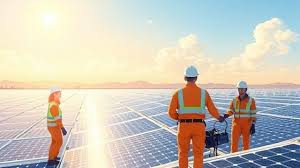Column
Nigerian Dream

Nigerians have their collective and individual dreams about themselves’ and about their country.
Nigeria has an estimated population of more than 200 million people. In their divergent demographics they exude their dreams of successes, prosperity and even ethnic supremacy struggles and leadership, the good, the bad and the ugly. Dreams, however, must have positive values.
The dreams of Nigerians could be found in their history, in their trials, fears, achievements and in their narratives, in their culture and tastes.
In the last edition of CATALOGUE I discussed the need for Nigerians to always WALK THEIR TALK. I was reacting to the poor outing of our athletes at the Tokyo Olympics. Some of the readers who responded to the column spoke about a contradiction based on the fact that Nigerians won two medals, silver and bronze.
Others said it was an anticlimax, recalling the fact that the 60 man Nigerian athletes needed to surpass the 1996 Atlanta Olympics exploits, where Nigeria won two gold medals. 1996 Games is now the bench mark which must be overtaken.
The absence of Nigeria in the football event was the most devastating experience to many Nigerian sports lovers.
The dream of every sports lover in Nigeria is to see Nigeria rule the world in sports. We saw the glee and euphoria that greeted the Olympic Eagles in 1996 at Atlanta. Sadly, governance in sports is nose diving and killing the Nigerian dreams in that direction.
In their dream of a great nation in sports Nigerians would recall the era of great athletes and world beaters like DICK TIGER who was world Feather weight champion. They wish the era of Tony Koyegwachi at world meets in boxing should be back.
They would wish that the Nigerian British Boxer and world Heavy weight champion Anthony Joshua reigned under the Nigerian flag.
Jesse Owens born James Cleveland was an American sprint star, four time Olympic gold medalist who specialized in sprints and long jump. He is seen as the greatest athlete in track and field. He was true exemplification of natural West African raw energy which Nigerian athletes had appropriated and slumped.
Jesse Owens once said, “We all have dreams, but in order to make our dreams come into reality, it will take an awful lot of determination, dedication, self discipline and effort”.
The dream of an average American black is to beat the white man, and excel beyond their expectations. Jesse Owens demonstrated this trait at the Berlins Olympics of 1936, when he outpaced all comers to win Gold in the sprint. He thus single handedly crushed and demystified the myth of Adolf Hitler and his Aryan race supremacy. In a single sports meet he broke the heart of the Almighty Adolf Hitler and enthroned the black dominance in short Distance races with four gold medals.
Nigerians yearn for the days of Innocent EGBUNIKE, the Ezinwa brothers, the era of Mary Oyeali, and Chioma Ajunwa in track and field.
The dream of Nigerian dominance in the Quartet 4 x 100 and 4 x 400 relays is gone. Improvement on the 1984 Los Angeles Olympics where Innocent Egbunike led the Quarter in 4 x 400 to win bronze is fast evaporating. Watching the clips of the 1987 All African Games in Nairobi, one could be happy seeing Innocent Egunike an Olympic medalist win the 400 meters with effortless grace. I can recall President Arap Moi was impressed with his feat, saying the Nigerian was not “innocent”. One could see the dream, the expectation of Nigerians come alive in the euphoria of that victory. According to Paul Valery, the best way to make your dream come true is to wake up”.
Nigerians must wake up to embrace their dreams of a great country, the giant of Africa in all aspects of human development.
Wake up to embrace the dream of economic prosperity, political stability, secure and stable polity where no one is oppressed.
Nigerians must wake up to embrace their individual dreams of greatness. In sports, every athlete who wants to be like Allyson Felix, one of the greatest sprinters of all times with 10 Olympic medals can begin now to prepare.
Cheating kills a dream. That was the story of Blessing Okabare, who was suspended on suspicion of drugs.
Nigerians who see negative pursuits as the only way to accomplish their dreams are not dreaming but are having a night mare.
That is what the Nigerian youth who wants to get rich quick and indulges in drug pushing goes through. Most often, they go down the grave or jail.
To make dreams come true and wake up on the right side of life, Nigerians must reject bad role models.
By: Bon Woke
Column
Are the Bears Wrong About the Looming Glut in Oil?

Column
Renewable Energy Faces Looming Workforce Crisis

Column
Is It End For Lithium’s Reign As Battery King?

-

 Sports4 days ago
Sports4 days agoBarca Impress On Return To Camp Nou
-

 Sports4 days ago
Sports4 days agoBundesliga: Oliseh Stars As Bayern Rebound To Thrash Freiburg
-

 Sports4 days ago
Sports4 days agoSunderland Fall At Fulham
-

 Sports4 days ago
Sports4 days agoForest Embarrass Liverpool At Anfield
-

 Sports4 days ago
Sports4 days agoOgoni Nation Cup: Victory Against Amee Base Excites Coach
-

 Niger Delta4 days ago
Niger Delta4 days agoTraditional Ruler Seeks End To Benin Artifacts Unauthorized Promotion
-

 Maritime4 days ago
Maritime4 days agoNSC Decries Police Interferences With Cargoes At Seaports
-

 Politics4 days ago
Politics4 days agoCleric Tasks APC On Internal Stability, Warns Otti

